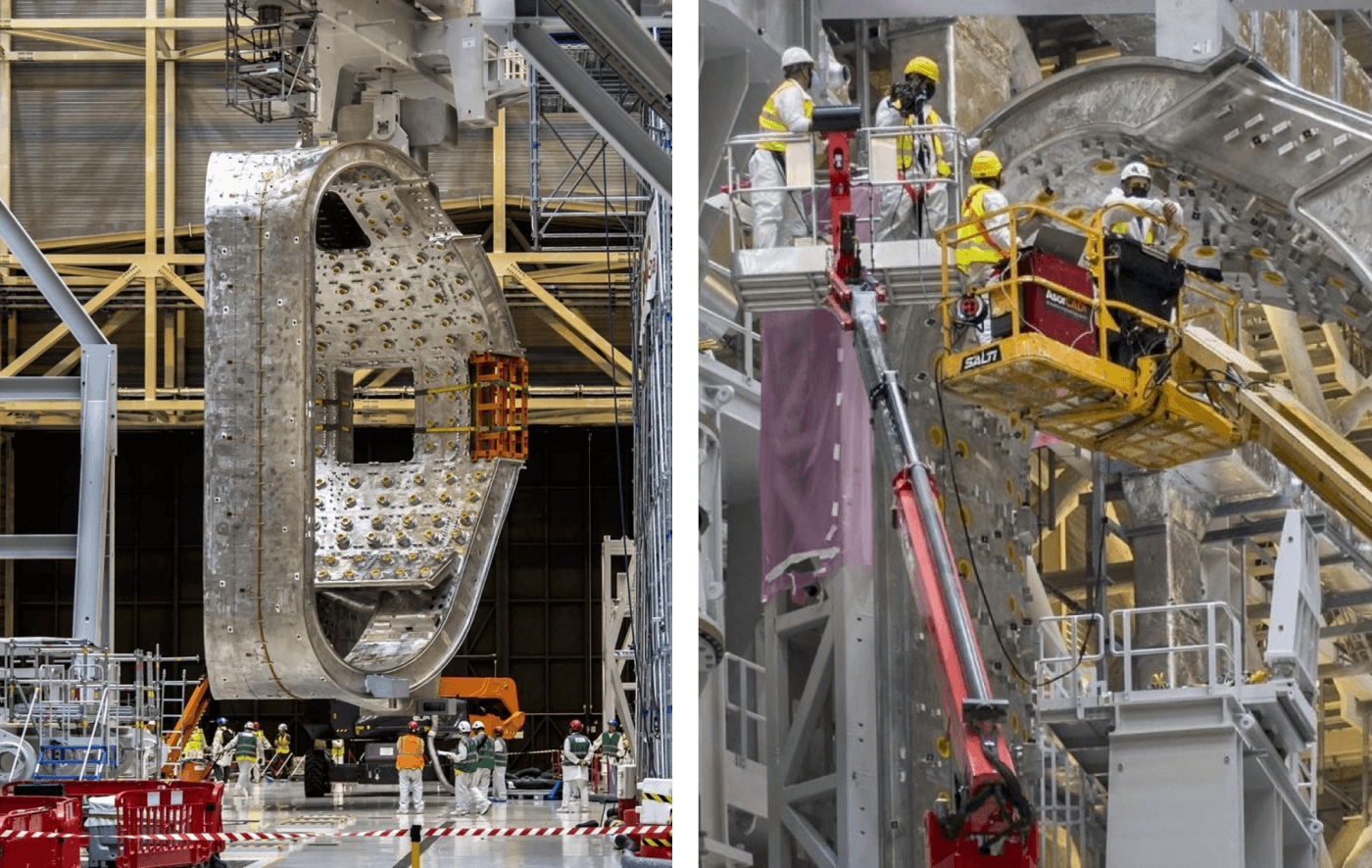What it Really Takes to Build Fusion Future
Fusion energy is no longer a distant dream. In recent years, there’s been a lot of significant strides marked by major scientific breakthroughs, government-backed roadmaps, and growing commercial confidence from tech giants. A prime example is the power purchase agreement (PPA) signed between Google and Commonwealth Fusion System (CFS), a strong indicator of optimism in fusion energy as a promising source of clean, limitless power. Across the globe, startups and institutions are racing to achieve practical fusion.
However, realizing this potential no longer solely hinges on scientific advancement. The challenges facing the fusion industry have shifted to complex system-level issues. Even with a major technical breakthrough, significant hurdles remain in how fusion reactors can be built, deployed, integrated, and operated at scale. This means investing in fusion extends beyond core physics, but in everything that surrounds it.
ITER First Plasma Chamber that was placed in May 2022
Assessing Manufacturing and Material Bottlenecks
Fusion reactors demand a vast array of specialized components, from high-temperature superconducting (HTS) magnets and vacuum systems to neutron-resistant materials. Most of these aren't commercially available at scale. The US Fusion Energy Sciences Advisory Committee (FESAC) notes that fusion materials and enabling technologies are the least developed part of the commercialization roadmap. Many of these components are still built in one-off batches, and global capacity for key materials is extremely limited.
This challenge is compounded by resource dependencies. For instance, lithium, a vital element for some fusion fuel cycles, faces a critical supply bottleneck. Studies suggest that without a solution to the lithium supply issue, large-scale fusion energy development will be significantly hampered. A report on lithium emphasizes that if fusion is to move beyond the lab, there should be an industrialized supply of its core components.
Bridging the Talent and Skill Gap
Fusion isn't just short on materials, it’s also facing people shortage. Reports indicate that 75% of the fusion workforce is concentrated in scientific and technical roles, with over a third holding PhDs. Yet, the fusion industry of tomorrow will require not just physicists. It will heavily rely on skilled technicians, engineers, safety officers, project managers, and operators.
Moreover, diversity remains low, only 23% of the workforce identifies as female. To address these gaps, national governments and private players must support apprenticeship programs and vocational education to train a skilled workforce in manufacturing and operations. They should also promote re-skilling pipeline, leveraging expertise from adjacent industries like aerospace or oil and gas, which possess many transferable skills. Furthermore, streamlined visa systems and international exchange fellowships are crucial to facilitate global talent mobility. The future of fusion relies as much on welders and system engineers as it does on plasma physicists, signifying a shift in focus from pure research to practical application and implementation.
Strengthening the Supply Chain
As fusion moves toward commercial prototypes, supply chains are under strain. According to the Fusion Industry Association (FIA), fusion companies spent over $434 million on supply components in 2024, a 73% increase from the previous year. However, suppliers remain hesitant to expand without guaranteed long-term contracts. Conversely, fusion companies can’t provide those guarantees until their funding is secure.
This classic “chicken-and-egg” dilemma is holding back progress across the board, from magnet manufacturing to vacuum pump development. Several key issues contribute to this, including a lack of standardized fusion component specifications which hinders mass production and interoperability. Additionally, inconsistent procurement forecasting makes it difficult for suppliers to plan investments, and insufficient risk-sharing between developers and suppliers reduces incentives for investment. Solutions will require structured public-private partnerships (PPPs), fusion-focused supply chain consortia, and better industrial planning to collectively address these challenges.
Beyond the Physics: Regulatory Challenges
Fusion raises complex challenges beyond core physics. These include considerations for siting and land use, as fusion reactors will require specific land parcels and careful spatial planning. There's also the critical need for robust transmission and distribution infrastructure to ensure generated energy can be efficiently integrated into existing power grids. Furthermore, a major hurdle lies in regulatory classification and licensing. Currently, most nations still treat fusion as nuclear fission from a regulatory standpoint, adding unnecessary hurdles. Updating these frameworks is critical to ensure fusion can integrate with decarbonized, flexible power systems, necessitating an adaptive and specific regulatory framework for fusion that acknowledges its fundamental differences from fission. Read More.
Funding the Fusion Foundation
There's a common tendency to fund reactor construction, but often less attention is paid to the surrounding infrastructure. Component testbeds, tritium handling systems, vocational training centers, these essential elements of the fusion ecosystem are frequently underfunded because they offer slower returns or don't fit traditional venture capital (VC) models.
Public de-risking is essential to unlock private capital for large-scale fusion infrastructure. Without government support, through grants, offtake agreements, or credit guarantees, private investors will remain cautious. Public investment is critical in high-capex, long-horizon energy systems. Without it, private markets demand risk premiums that delay deployment. Fusion-specific financial instruments, such as green bonds, milestone payments, or blended capital, could help accelerate grid and supply chain readiness.
The Future Needs More than Fusion Reactors
The hard truth is this: fusion energy may never reach the world without the infrastructure to support it. From materials to talent, from regulation to financing, the road to fusion is long and complex. But these challenges are solvable, if approached with urgency, coordination, and strong public commitment.
The fusion community has already shown remarkable progress in core science. Now, it must work with industry, academia, and governments to build the systems around science. Because fusion won't just change physics; it will change how we build, work, and power the world.


